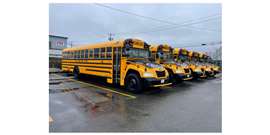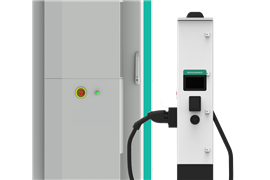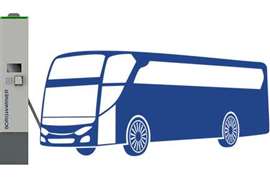Why electric forklift operators may be among the first adopters of V2X
14 April 2024
Amid the global shift toward sustainable energy solutions, the integration of vehicle-to-everything (V2X) technology is widely viewed as a pivotal advancement in the transition to an electric energy system, with electric vehicles (EVs) playing a key role in energy storage. With mass adoption, this technology will lead to a more resilient and efficient electrical grid. It may also position the operators of industrial EVs, such as forklifts, at the forefront of its adoption.
The transition to EVs is putting unprecedented pressure on the electrical grid, spotlighting the potential of V2X technology. Vehicle-to-grid (V2G), for example, allows commercial and passenger EVs to contribute energy back to the grid, using EV batteries as moving energy storage. Vehicle-to-home (V2H) allows them to serve as backup power sources. Other V2X applications include vehicle-to-load (V2L), which allows EVs to power other devices, and vehicle-to-vehicle (V2V).
Consumer EV Challenges
 Power Cellect is an optional package available on 27 Hyster electric forklift models. (Photo: Hyster)
Power Cellect is an optional package available on 27 Hyster electric forklift models. (Photo: Hyster)
At the consumer level, challenges exist to broad V2X adoption. For instance, there is a current lack of smart charger infrastructure and the mechanisms to address the issue of battery depreciation for private EV owners. Additionally, automakers worry that V2X could harm expensive car batteries and upset customers.
Meanwhile, utilities and regulators do not have a system to manage the energy exchange safely and reliably. In other words, they can’t reliably log the power input from EVs. Level 1 and Level 2 chargers, which are the lowest cost and most abundant, are not equipped to provide utilities with the data they need for V2G.
Finally, while the V2G concept promises additional storage capacity and enhanced grid reliability, it fails to address the issue of battery depreciation for private EV owners. Without a framework to compensate owners for the wear and tear on their batteries, the adoption of V2G technology among private vehicle owners remains a challenge.
Commercial Fleet Opportunities
On the other hand, commercial entities, particularly those operating electric forklift fleets, are uniquely positioned to capitalize on V2X.
For example, unlike with consumer EVs, electric forklift operators can integrate battery usage into their broader operational cost/benefit analysis. Commercial and enterprise customers, with their significant control over the energy usage of the industrial electric equipment at their facilities, are at the vanguard of evaluating V2X benefits. These entities can meticulously assess the advantages of utilizing their EV batteries, incorporating battery depreciation into their total cost of ownership (TCO) calculations.
 In April 2023, Boston Public Schools announced the acquisition of 20 electric school buses from Blue Bird Corporation. (Photo: Blue Bird)
In April 2023, Boston Public Schools announced the acquisition of 20 electric school buses from Blue Bird Corporation. (Photo: Blue Bird)
The ability to engage in peak shaving and demand response also presents an opportunity to optimize electricity costs. As Aaron August, vice president of utility partnerships and innovation for Pacific Gas & Energy (PG&E), pointed out, smart bidirectional charging can play a crucial role in decarbonizing our planet at a reduced cost, underscoring the strategic importance of V2X technology for commercial users.
This is why the first pilot projects are being run by the commercial fleets of utility-owned commercial vehicles or, in another case, by electric school bus fleets. First Student, a school transportation company, announced in September 2023 that it aimed to leverage V2G technology with Entergy New Orleans.
Forklift Fleets V2X
Electric forklift fleets powered by advanced lithium batteries are primed to harness the full potential of V2G technology. Coupled with an automated fleet management system, these fleets already achieve substantial energy efficiency improvements through the smart charging tactics of peak shaving and demand response.
Ninety percent of an electric forklift’s total carbon footprint is generated by its use of electricity (calculated based on the average carbon intensity of U.S. electricity generation), and the most effective way to mitigate the emissions of a forklift fleet is to use a larger share of clean, renewable energy. The goal of net-zero emissions for many operations hinges on the ability to store renewable power and use it efficiently.
The technological advancements in battery and charging technology have significantly enhanced the efficiency and reliability of bidirectional charging systems. With all the technology and business incentives in place, could it be possible in the near future to store energy in forklift batteries to power other electrical equipment in a facility and push the energy back to the grid when required?
Electric forklift operators, with their ability to directly measure the benefits against operational costs, including battery depreciation, may indeed be among the first to embrace V2X charging. This move not only promises to optimize their energy usage but also to pave the way toward a more resilient and sustainable grid.
|
STAY CONNECTED



Receive the information you need when you need it through our world-leading magazines, newsletters and daily briefings.
CONNECT WITH THE TEAM










